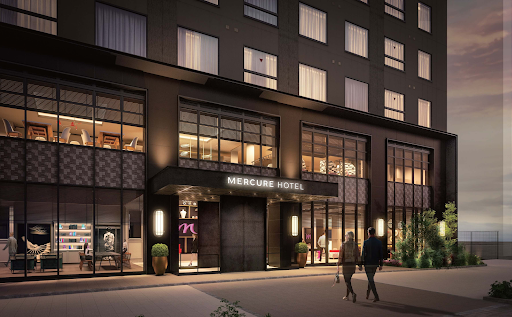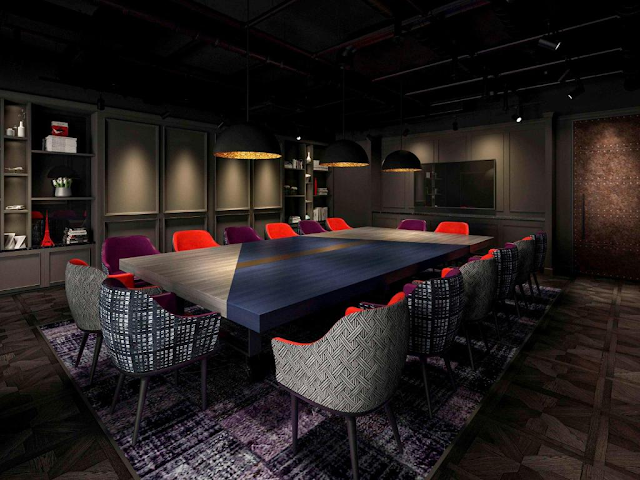Mercure Hotels Tokyo strategically positions itself in two of Tokyo's most dynamic and well-known districts: Ginza and Hibiya. Each district exudes a unique charm that complements the Mercure brand's hospitality and contemporary style.
Nestled in the heart of Tokyo's upscale shopping district, Mercure Tokyo Ginza offers guests an immersive experience into the world of luxury and refinement. Renowned for its elegant boutiques, department stores, and traditional Japanese shops, Ginza exudes an aura of sophistication and elegance. The hotel's proximity to Ginza-itchome subway station provides seamless connectivity to the city's extensive transportation network, allowing guests to explore the vibrant city with ease.
Mercure Tokyo Hibiya, slated to open in December 2023, will seamlessly integrate into the dynamic Hibiya district, a hub of business and entertainment. Home to renowned offices, theaters, and museums, Hibiya presents a captivating blend of modern energy and cultural heritage. The hotel's central location places guests within easy reach of iconic landmarks like the Imperial Palace and Tokyo Tower, providing a captivating backdrop for their stay.
AccorHotels, a global hospitality leader with over 5,000 hotels in 110 countries, stands as the visionary force behind Mercure Hotels Tokyo. Renowned for its commitment to excellence and innovation, AccorHotels brings a wealth of expertise to the development of these properties, ensuring that they embody the Mercure brand's promise of comfort, style, and exceptional service.
Each Mercure Hotel in Tokyo embraces the distinct narrative of its surrounding neighborhood, weaving a tapestry of storytelling through its design and ambiance. Mercure Tokyo Ginza captures the essence of Ginza's glamour and sophistication, reflecting the district's rich heritage and modern allure. The hotel's lobby features captivating display shelves reminiscent of the area's boutique-lined streets, while gas lamp-inspired lighting evokes a sense of timeless elegance. Within the guestrooms, subtle silver coin motifs subtly nod to Ginza's history as a commercial hub.
Mercure Tokyo Hibiya adopts a contemporary design aesthetic that harmoniously blends with the district's historical and cultural significance. Inspired by traditional theater design elements, the hotel's interior features elegant curves and warm lighting, creating an atmosphere of refined artistry. This design approach pays homage to Hibiya's legacy as a center for performing arts and entertainment.
Mercure Hotels Tokyo caters to a diverse range of travelers, whether they seek business-oriented facilities or leisure-focused amenities. Mercure Tokyo Ginza provides a well-equipped business center and versatile meeting rooms, while Mercure Tokyo Hibiya offers a state-of-the-art fitness center and an inviting outdoor terrace with a serene garden. Both hotels seamlessly blend their design narratives with practical considerations, ensuring an enriching and memorable experience for every guest.
Architect Design by: Hiroshi Nakamura & NAP Co., Ltd., a visionary architect, is known for seamlessly blending modern design with traditional Japanese elements. For the Mercure Hotels Tokyo project, Nakamura envisions a structure that harmonizes with the dynamic urban landscape of Tokyo while incorporating elements inspired by traditional Japanese architecture. The hotel's facade features a combination of glass panels and wooden lattice screens, creating a play of light and shadow. The interiors are designed to be spacious, with a minimalist aesthetic that emphasizes natural materials and the use of local craftsmanship.
Interior Design by: Kaoru Morioka, a Tokyo-based interior designer, specializes in creating spaces that evoke a sense of tranquility and sophistication. For Mercure Hotels Tokyo, Morioka plans to bring the essence of Japanese hospitality, or "omotenashi," into every detail. The hotel lobby will showcase a blend of modern and traditional Japanese art, with a central garden providing a calm oasis. The guest rooms will feature a calming color palette, comfortable furnishings, and artwork inspired by Tokyo's vibrant culture. Morioka also intends to incorporate elements of feng shui to ensure a harmonious and welcoming environment.
Story Ideas Design: "Harmony in the Metropolis". Mercure Hotels Tokyo stands at the intersection of tradition and modernity in the heart of the bustling city. The protagonist, Emi Tanaka, an ambitious young architect, is given the opportunity to work on the Mercure project. As Emi delves into the design and construction process, she discovers an old journal hidden in the building's original plans. The journal belonged to the original architect who designed the first structure on the site, dating back to the early 20th century. Emi becomes engrossed in the architect's experiences during a transformative period in Tokyo's history. The story alternates between Emi's present-day challenges and the historical account of the architect navigating societal changes.
As Emi uncovers more about the past, she realizes that the hotel's design is a testament to the resilience of Tokyo and its people. The journal reveals the struggles and triumphs of the architect, paralleling Emi's own journey to blend tradition with contemporary design. The narrative weaves themes of heritage, adaptation, and the evolving identity of Tokyo as Emi strives to create a space that pays homage to the city's rich history while embracing its vibrant future. Throughout the story, the Mercure Hotels Tokyo becomes a symbol of harmony, not just in its architectural design but also in the connections it fosters between the past and the present.




















No comments:
Post a Comment